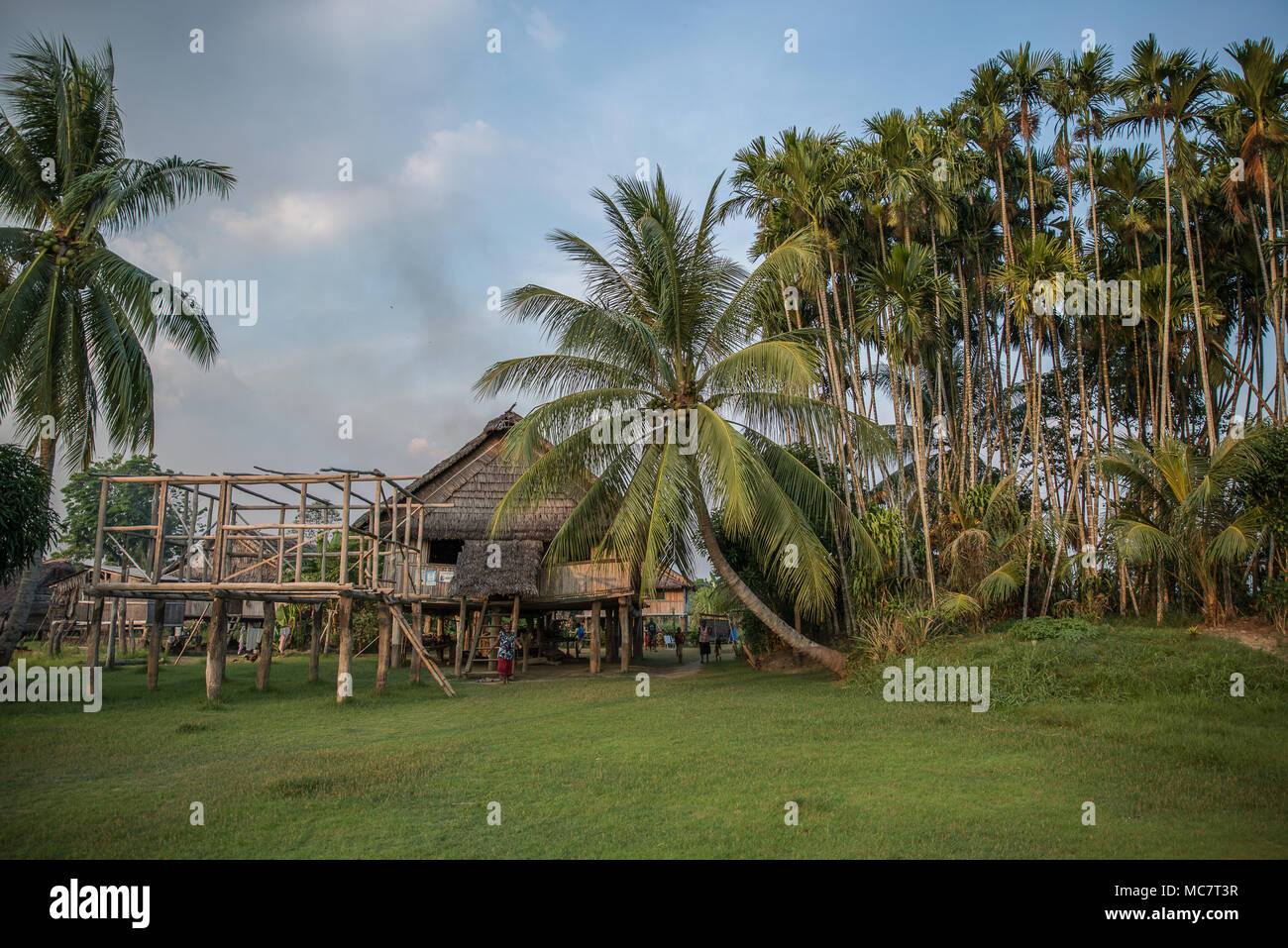Traditional house in Kaminibit Village, East Sepik Province, Papua New Guinea

Image details
Contributor:
Roberto Cornacchia / Alamy Stock PhotoImage ID:
MC7T3RFile size:
66.6 MB (4.8 MB Compressed download)Releases:
Model - no | Property - noDo I need a release?Dimensions:
5905 x 3942 px | 50 x 33.4 cm | 19.7 x 13.1 inches | 300dpiDate taken:
August 2017Location:
Kaminibit Village, Middle Sepik, East Sepik Province, Papua New GuineaMore information:
The people of this ecologically diverse region speak more than 250 languages and are knitted together in systems of trade and cultural interaction. Ritual, genealogical and historical knowledge defines one group from another and maintains the distinctions that facilitate trade. Life in the Sepik area revolves around the river, with men paddling narrow dugout canoes full of goods for trade, women fishing or making sago and children joyfully swinging from trees to splash down in the river. The Sepik is a gallery of tribal art, each village boasts a unique style and every villager is an artisan. Head hunting was a river culture practice in the Sepik area. The fact that young men could only come of age in these regions by taking a head, suggests how incessant warfare must have been. The Iatmul people of the Sepik would take the heads in battle, boil away the flesh and hang the painted and decorated skulls as trophies in the men's houses. The head hunters were not necessarily cannibals, but many were. Human flesh was eaten until fairly recently and some of the older men from villages remember tasting it as children, culture_sepik_2.jpgthey will tell you that it tasted a little bit like chicken. The men's house is the place where important decisions regarding the village are made, where boys are initiated and become men and ceremonies to please the spirits are performed. Here the crocodile is worshiped as the water spirit. In excruciatingly painful ceremonies young men have their backs cut to resemble the markings of the crocodile, which is a symbol of strength and power.